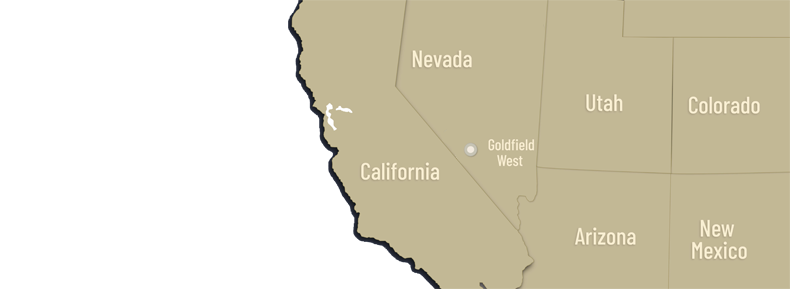Goldfield West
Stage
Exploration
The Goldfield West Project, 100% owned by A2, subject to underlying royalties, is comprised of 81 unpatented mining claims and is located 8 kilometres west of Goldfield, Nevada.
Goldfield West lies just west of the Goldfield collapse caldera, which is approximately 8 kilometres in diameter. The caldera is built within Tertiary volcanic rocks, mostly andesite, rhyolite, and ash-flow tuffs built on a basement of Lower Paleozoic, deep-water, marine sedimentary rocks. High-grade gold, often exceeding 33 g/t gold, was produced from a large number of shallow shafts and adits within the caldera proper, mainly in 1905-1920. District production was reported to be more than 4.0 million ounces of gold.
In addition, there are a number of gold deposits along the northern caldera wall (Black Butte, McMahon Ridge, Adams, Sandstorm/Kendall, and Gemfield). These deposits are lower in total sulfide and respond well to heap leaching. These deposits have been extensively drilled and cumulative resources now exceed one million ounces gold. None of these deposits have been mined, except for Adams, a Cordex discovery in the 1970’s, and are now controlled by Waterton.
The Goldfield West claims display a large zone of high-level hydrothermal alteration known as steam-heated ground (also called acid-leached, solfataric, or advanced argillic). Small young rhyolite domes and dikes (less than 10 million years old) are scattered throughout the claim block, making Goldfield West geologically identical to the upper levels of the Eastside alteration system. The steam-heated alteration in composed of very fine silica, alunite, and kaolinite. This type of alteration is formed by vapors streaming up from a boiling water table at depth. Steam-heated ground is usually devoid of precious metals, even if it lies directly above significant gold and silver ore zones, but can bjavascript:void(0)e high in mercury which can be transported as a gas in the vapors.

